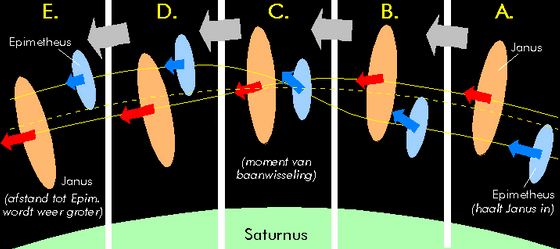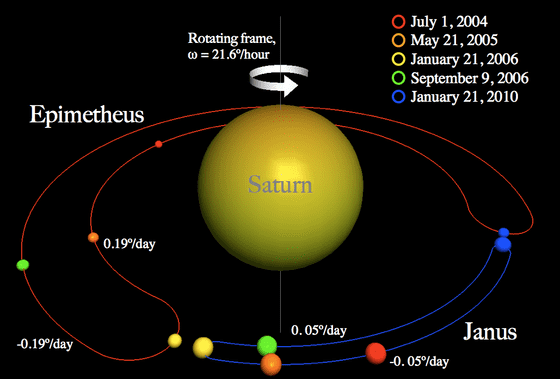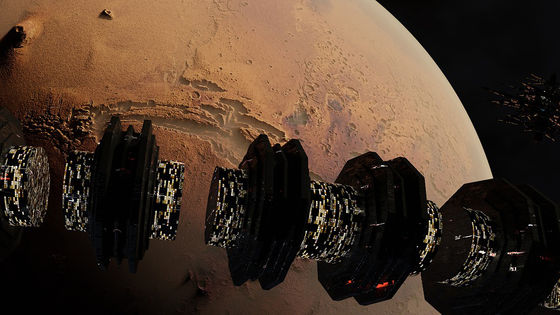Astronomers propose a new idea `` horseshoe system '' for extraterrestrial civilization to replace Dyson sphere

by
In science fiction works set in space, Dyson spheres (shells that cover stars) built by aliens with advanced technology to make the most of the energy of the stars often appear, as well as actual exploration of extraterrestrial civilizations. The project also emphasizes the discovery of such megastructures. Astronomers such as the University of Bordeaux in France discovered that it is extremely stable when the planet is placed in a horseshoe orbit that draws a U-shaped trajectory, and the developed civilization does not bother to cover the stars A large number of planets proposed to be placed in the habitable zone.
Constellations of co-orbital planets: horseshoe dynamics, long-term stability, transit timing variations, and potential as SETI beacons | Monthly Notices of the Royal Astronomical Society | Oxford Academic
https://doi.org/10.1093/mnras/stad643
Aliens Could Reveal Their Location by Packing 24 Planets Into One Orbit
https://www.inverse.com/science/planets-sharing-a-weird-orbit-could-be-evidence-of-alien-architects
In a study published in May 2023 in the Royal Astronomical Society Monthly Report, Shawn Raymond, an astronomer at the University of Bordeaux, and his colleagues said, ``As a result of examining how many planets can orbit a fixed star at an equal distance, the Earth We discovered that up to 24 planets with the same mass as , can share the same orbit stably for a long time.'
This idea may seem crazy, but it is possible because of phenomena already observed in nature. Saturn's moons Epimetheus and Janus share orbits, and the difference in orbital radii is less than the diameter of the moons, about 50 km apart. Therefore, when one satellite catches up with the other, it seems that they will collide. , It continues to circulate stably without bumping.

by
The two satellites have the same orbit, but the inner satellite's orbital speed is slightly faster, so the outer satellite lags behind the inner satellite. When viewed from one of the satellites, the approaching satellite appears to turn around and return to its original path, forming a large U shape, hence the name 'horseshoe orbit'.

by
An easy-to-understand animation of the horseshoe trajectory is as follows.
Horseshoe orbit, Saturn's satellites Epimetheus and Janus are doing, and although they are revolving in the same orbit, the position changes and catches up with the previous satellite, but they do not collide and the orbit changes and continues to rotate https://t.co/ExRbDpYDoU
— Yukimasa Zuyoshi (@Kyukimasa) May 12, 2023
It seems that enough stability can be maintained up to 24 https://t.co/tWpAymDBIa pic.twitter.com/bDD2KWG3WC
The research team, who thought that if planets and their satellites could do this, should be able to do it with stars and planets, and used computer simulations to verify the behavior of multiple planets in horseshoe-shaped orbits relative to each other. Assuming that a planet with the same mass as the Earth orbits the main star at 1 astronomical unit (the distance from the Earth to the Sun), up to 24 planets can maintain stable orbits for billions of years. I understand This was the same even after stars nearing the end of their life began to expand, as the sun does about 5 billion years later.
Up to two celestial bodies with horseshoe-shaped orbits have been discovered so far. In other words, if there is a 'horseshoe system' in which three or more planets take horseshoe orbits, it is highly likely that it is a work by an extraterrestrial civilization with technology enough to move the planets. will be
``I think it's pretty reasonable to say that horseshoe systems with three or more planets are the best targets for looking for life outside the solar system,'' Raymond said.

According to the research team, it is easy to identify the horseshoe system by using the transit method , which detects when a planet crosses a star by measuring changes in the light of the star. It takes about 10 years to observe, but Raymond thinks it's worth it.
``Whatever the horseshoe system is, it's either the work of aliens or the result of spectacular planet formation, so it's very interesting either way,'' Raymond said.
Related Posts:
in Science, Posted by log1l_ks







